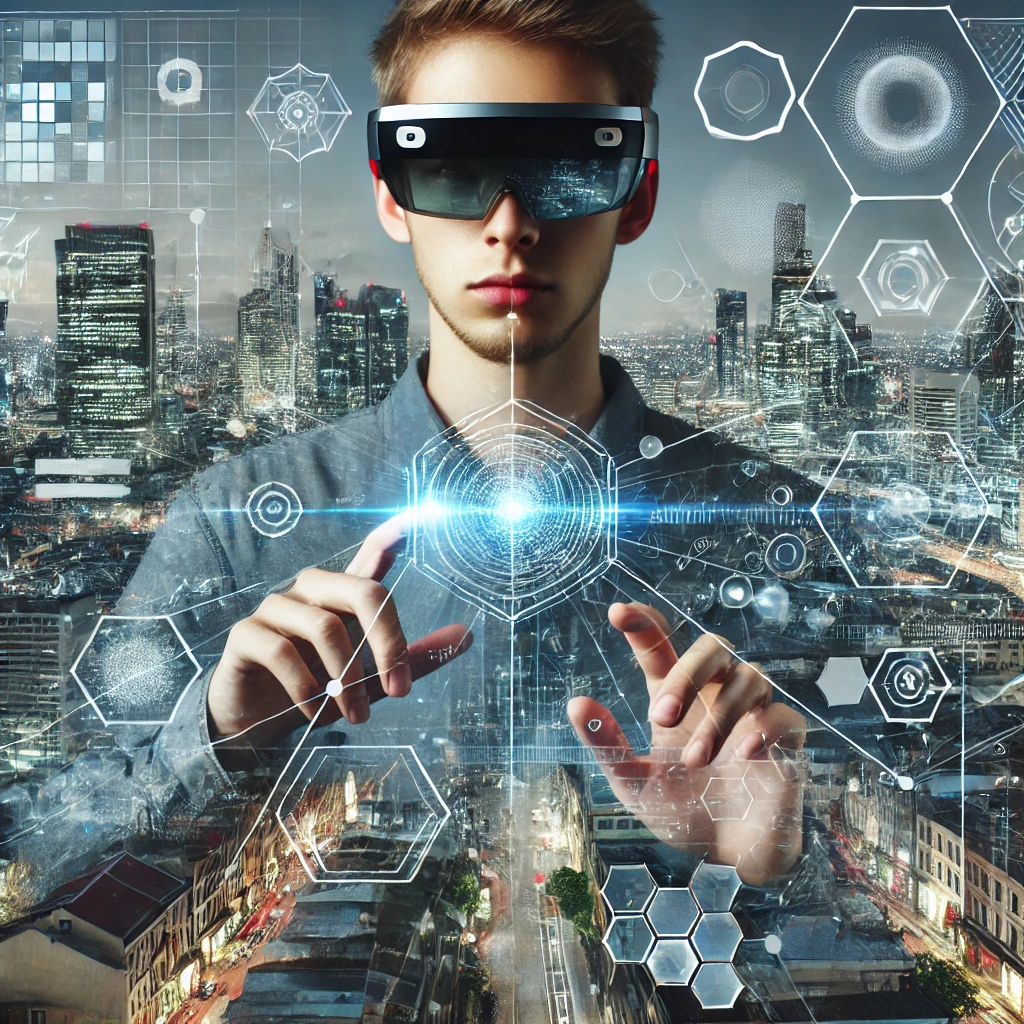Augmented Reality: Bridging the Digital and Physical Worlds
Augmented Reality (AR) is one of the most intriguing technologies reshaping our worldview in the quickly changing digital landscape of today. By superimposing digital content—such as sounds, images, or other data—onto the actual world, augmented reality (AR) improves our physical surroundings in contrast to virtual reality (VR), which submerges users in a wholly digital environment. Using smartphones, tablets, or specialty glasses, augmented reality (AR) is adding a new level of involvement to our daily experiences.
What is Augmented Reality?
Fundamentally, augmented reality (AR) blends computer-generated visuals with the user’s actual surroundings. Users may interact with virtual things while maintaining a sense of presence in their immediate surroundings because to this seamless merging of the digital and real worlds. The technology maps the physical environment using cameras, sensors, and algorithms, then superimposes pertinent digital data on top of the map. This may be anything from an intricate 3D object and dynamic animation to a straightforward text overlay.
Pokémon GO, which allowed players to use their cellphones to capture virtual Pokémon in actual locales, is a popular example of augmented reality in action. With its ability to blend fun and realism, this game captivated millions of players throughout the globe.
Applications of AR Across Industries
Although augmented reality is frequently linked to gaming and entertainment, its uses cut across many sectors, revolutionizing the way we work, live, and learn. Let’s examine a few of its main applications:
- Retail and E-Commerce: Augmented Reality (AR) is transforming the buying experience by enabling buyers to see things before they buy them. With IKEA’s augmented reality software, for instance, customers can “place” virtual furniture in their homes to see how it fits and appears. In a similar vein, cosmetic businesses improve online buying experiences by providing AR mirrors that allow customers to virtually experiment on makeup.
- Education and Training: AR offers immersive, interactive learning environments. In the classroom, students may virtually study anatomy, explore historical locations, or see difficult scientific ideas in three dimensions. AR provides practical assistance for training on the job. For example, technicians can receive real-time assistance from distant specialists using smart glasses for repairs.
- Healthcare: AR is being used in the medical profession to improve patient care, diagnosis, and surgery. To help with more accurate procedures, surgeons can utilize augmented reality (AR) to show 3D pictures of a patient’s anatomy onto their body. Virtual dissections let medical students learn about human anatomy in depth without using real
- Real Estate: Real estate agents can now provide virtual property tours thanks to augmented reality, providing prospective buyers with a realistic perspective of properties without requiring a physical visit. On certain systems, users may even visually alter room designs, furniture arrangements, and wall colors.
- Entertainment and Media: AR is transforming the way we consume media. AR is improving storytelling in media and entertainment, from interactive ads to live sports broadcasts that display data and replays right on the field. AR experiences are also available at museums and galleries to enhance the context of historical items and bring them to life.
The Future of Augmented Reality
AR technology has a plethora of possible uses that will only expand with time. Smart glasses and other wearable AR devices will proliferate, providing consumers with hands-free AR experiences that are seamlessly incorporated into their everyday lives. Imagine being able to get real-time information on restaurants, historical sites, and navigational directions while exploring a city with your glasses on. This would make your surroundings more intelligent and engaging.
AR has the potential to revolutionize workplace collaboration. Despite members being hundreds of miles distant, remote teams can employ augmented reality (AR) to create virtual meetings in which digital avatars or objects appear in the same physical environment. AR-enhanced workflows, in which digital blueprints are projected directly onto equipment or workspaces, might improve accuracy and decrease mistakes in industries like construction and manufacturing.
Challenges to Overcome
AR has a lot of potential, but it also has drawbacks. While AR through smartphones is widely used, specialized devices like as smart glasses are still in development, and their mainstream acceptance has been sluggish owing to their expensive price and limited content. This is one of the key obstacles facing AR technology. Another issue is security and privacy because augmented reality apps frequently employ cameras and sensors to gather information about users’ surroundings, which raises questions about data protection and misuse.
Another concern is user experience: for augmented reality to be really seamless, it must blend in seamlessly with our everyday activities without being obtrusive. Achieving a balance between augmenting reality and inundating people with excessive digital data is a challenge for developers.
Conclusion
At the vanguard of technological advancement, augmented reality provides a special means of fusing the digital and real worlds. AR has come a long way, from changing businesses to improving human experiences, and there are still a ton of amazing things in store for us. AR will continue to play a bigger part in influencing how we interact with the environment in the future as more applications and better hardware become available.
Augmented reality (AR) has the potential to improve our world’s connectivity, engagement, and interactivity, whether you’re purchasing online, learning a new skill, or navigating a metropolis. We literally have the future in our hands.
Share this content:



